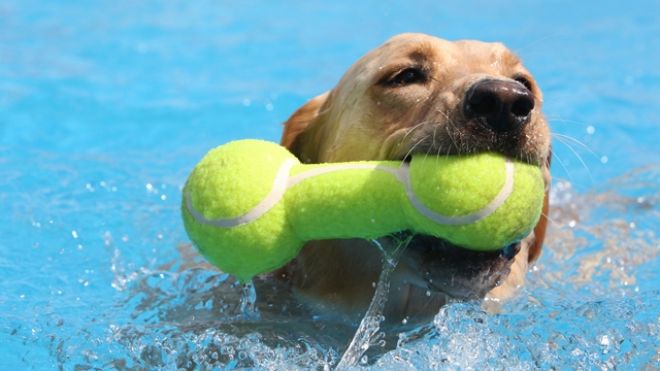Pets
Getting The Most From Your Dog Toys

It’s a scenario that’s so common it’s bordering on cliché – you buy your mutt a million dog toys but the only thing he wants to play with is an old shoe. Cliché it may be but it does indeed happen quite a lot to say the least, which isn’t the most agreeable situation for owners who’ve forked out vast sums of money on dog toys.
According to the experts, one of the most commonly-asked questions of all by dog owners is that of how a person can ensure that they and their dogs get the very most out of their toys. After all, toys play a crucially important role in the health, wellbeing and indeed the happiness of any dog, so is there a right way and a wrong way to go about toy use?
Technically speaking, it all comes down to the dog as each and every pup on the planet has their own unique personality. Nevertheless, in the interests of the dog’s wellbeing and to ensure you’re not wasting money on toys than never get used, there are a few expert tips that should be followed if and when applicable.

Stock Rotation
For example, if you’re the kind that pretty much buries your dog in a thousand and one toys that are available at all times, you’re far from the minority. This is the standard approach to toy provision for about 99% of all dog owners, but is in fact contrary to expert guidelines. Instead, what tends to work so much better is a system of frequently rotating the dog’s toys – as in giving him one or two to play with at a time at the very most and swapping them out on a regular basis. This way, he really never gets time to get bored of any one toy as just as he’s had enough with one, it’s taken away and swapped for another. And by the time he gets the first toy back, it’s new and exciting again. If by contrast he’s surrounded by dozens of toys all day and every day, he’ll soon get bored of the lot of them.
Toy Variety
Chances are you know what kind of toy is your dog’s favourite, but at the same time it’s highly recommended that a good amount of variety be introduced. For example, there should be toys in there that he likes to play fetch with, toys that are basically there to be ripped to pieces (or at least attempted) and other toys that are more comforting or offer some kind of sensory experience…squeakers, for example. This again works well with the rotation method as you are effectively giving your dog a constantly changing cycle of toys, each of which encourages a different kind of behaviour and provides real entertainment.
Interactive Toys
Dogs need quiet time just the same as people, but when it comes to building those incredible bonds with your dog, there’s almost nothing more effective than interactive toys. The simple fact of the matter is that dogs love to play, therefore if you give them the opportunity to share what they love to do with the people they love the most, the result is a positive bond-building experience like no other. It’s natural for some to buy their dogs toy after toy in the hope of keeping them entertained on their own, but there’s really nothing better than getting stuck-in and joining in the fun.
Treat Dispensers
One of the very best dog toy ranges on the market right now is that of treat-dispensing toys. These vary in shape, size and the way in which they work quite enormously, though all share the same basic function – the dog has to work hard to get a tasty treat out in the open. These are fantastic for encouraging your dog to not only exercise, but to build their logic and intelligence skills at the same time. So rather than simply handing the treats over, consider instead making them work a little for them.
Regular Refreshes
Last but not least, along with on-going ‘stock rotation’ and interaction, it’s still important to make sure that your dog’s toys are refreshed from time to time. There will always be those certain toys they’ve had since being puppies and will never grow tired of, but just as is the case with humans, all dogs need new toys on a regular basis to experience and learn new things. It’s important to remember that toys are not just fun and games for dogs – they’re essential for helping them remain strong, healthy, active and mentally challenged throughout their lives.
-

 Tech11 years ago
Tech11 years agoCreating An e-Commerce Website
-

 Tech11 years ago
Tech11 years agoDesign Template Guidelines For Mobile Apps
-

 Business6 years ago
Business6 years agoWhat Is AdsSupply? A Comprehensive Review
-

 Business10 years ago
Business10 years agoThe Key Types Of Brochure Printing Services
-

 Tech8 years ago
Tech8 years agoWhen To Send Your Bulk Messages?
-

 Tech5 years ago
Tech5 years ago5 Link Building Strategies You Can Apply For Local SEO
-

 Law5 years ago
Law5 years agoHow Can A Divorce Lawyer Help You Get Through Divorce?
-

 Home Improvement6 years ago
Home Improvement6 years agoHоw tо Kеер Antѕ Out оf Yоur Kitсhеn































